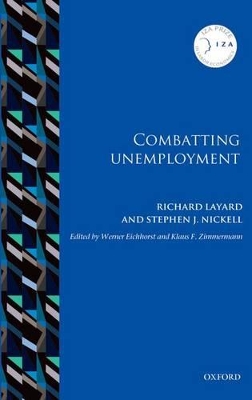IZA Prize in Labor Economics
1 total work
Why is unemployment higher in some countries than others? Why does it fluctuate between decades? Why are some people at greater risk than others?
Layard and Nickell have worked on these issues for thirty years. Their famous model, first published in 1986, is now used throughout the world. It asserts that unemployment must be high enough to reduce the real wages for which workers settle to the level justified by productivity. So what affects 'wage push'? The authors showed early on that the key factors affecting 'wage push' are how unemployed workers are treated and how wages are negotiated. If unemployed people get benefits without being required to accept jobs, vacancies go unfilled and mass unemployment results. The solution is welfare-to-work policies like those now introduced in most parts of the world.
The authors have proposed these policies for the last twenty-five years in a series of key articles reproduced in this book. Their original analysis explains the subsequent movement of unemployment over the last two decades. They conclude the book with a new chapter on what should be done in the recession: no-one, they say, should be given unemployment benefit beyond a year, after which they should be offered work.
Layard and Nickell have worked on these issues for thirty years. Their famous model, first published in 1986, is now used throughout the world. It asserts that unemployment must be high enough to reduce the real wages for which workers settle to the level justified by productivity. So what affects 'wage push'? The authors showed early on that the key factors affecting 'wage push' are how unemployed workers are treated and how wages are negotiated. If unemployed people get benefits without being required to accept jobs, vacancies go unfilled and mass unemployment results. The solution is welfare-to-work policies like those now introduced in most parts of the world.
The authors have proposed these policies for the last twenty-five years in a series of key articles reproduced in this book. Their original analysis explains the subsequent movement of unemployment over the last two decades. They conclude the book with a new chapter on what should be done in the recession: no-one, they say, should be given unemployment benefit beyond a year, after which they should be offered work.
